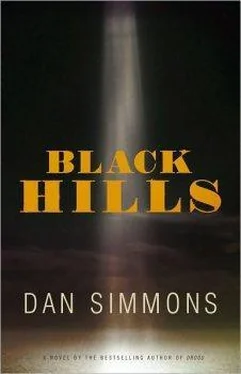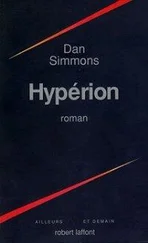
DR. CONSTANCE GREENE, born in 1972, the paleo-ecologist, environmental expert, and ethnologist once called “the twenty-first century’s female Leonardo” by Time magazine, credits some of her interest in the human aspects of various Pleistocene rewilding efforts around the world to camping trips she took with her father, Robert Ochs, when she was a girl.
In a BBC interview she did in 2009, Dr. Greene—known as Connie not just to her students and friends but to most of her peers around the world—said:
When I was ten years old, my dad took me camping to a place in South Dakota called Bear Butte. You’re not allowed to camp on or near the butte unless you’re Native American, but somehow my dad got permission, so we camped near the summit of that interesting lacolith. Except for rattlesnakes, there was no danger up there, so Dad let me wander by myself a lot as long as I stayed within shouting range. There was this one afternoon—it was raining, I remember, and I met… I mean I had this dream about… at any rate, at age ten, I suddenly saw that if we were ever going to bring back the big predators to the world, in other nations as well as in the dying American West, the rewilding—it was already a term that I’d heard from my father and his friends—the rewilding would have to have a human component. Indigenous peoples should have a choice. You can’t just… I mean, you can’t … keep a culture alive by trying to freeze it in stasis while you’re embedded deep within a different culture. It’s impossible. It ends up amounting to dressing up a few days a year, chanting old chants that few believe in any longer, and doing dances that your great-great-great-great-grandparents did, too often to get a few bucks from tourists. It doesn’t work. But if we were really going to set aside these millions and millions of acres and hectares of land and reintroduce the closest genetic cousins to the megafauna top predators and other extinct species that evolved there originally, that used to live there, that used to own the damned place… I thought, why not the original people too? Why not give them a choice? I thought it was a good idea at the time—I was ten, remember, but my mom and dad had a weird habit of listening to me—and so did all my relatives.

PAHA SAPA never worked for Gutzon Borglum again, although it is said that the two remained friends until the end of Borglum’s life.
One piece of advice that Paha Sapa did take from his former boss was to consult with Borglum’s doctor. It turned out that the 1935 diagnosis of cancer by the “quack in Casper” had been false. In January of 1937, Paha Sapa underwent surgery for a long-term and very painful intestinal obstruction. The surgery was successful, there was no tumor or malignancy, the obstruction never returned, and Paha Sapa remained relatively pain free for the rest of his life.
Sometime in 1937, Paha Sapa moved to a remote place deep within the Black Hills and built a small but comfortable home there. He was not a recluse; he traveled frequently to visit his grandson, his later grandchildren, and old friends such as Borglum. But after World War II, word got out among the Ikče Wičaśa that there was an old man in the Black Hills with the name Black Hills, and some people—at first it was just other old men, but later it was more and more young men—made the long trek into the Hills to visit with this Paha Sapa, trade stories, and, increasingly, to ask questions about the Old Days.
Somehow the legend grew that this old man had carried the ghost of Long Hair Custer with him for sixty years.
More and more young Lakota men—and then young Lakota women—came to visit Paha Sapa, traveling first from the nearby Pine Ridge Reservation, then from the Rosebud, then Lower Brule, Crow Creek, Yankton, Cheyenne River, and Standing Rock reservations. Then, almost shockingly, young and old Cheyenne and Crows and even Blackfoot from their reservations way over in the northwestern corner of Wyoming and Montana. When members of tribes from California and Washington state began visiting the old man—tribes Paha Sapa had never even heard of—he laughed and laughed.
Paha Sapa did turn away data-hungry ethnologists, Native American apologists, and at least one media-famous founder of the American Indian Movement, but he always had time to sit and talk and smoke a pipe with any young person or old person without, as the wasichu like to say, an agenda. Many of the Natural Free Human Beings who visited him during the summers of those last years remember his curious great-grandson Robert, and how the boy had a gift—unusual for wasichus , they said—of knowing how to listen. The old man also often had other great-grandchildren around or was planning a trip to Denver or elsewhere to visit them. Even when the elder’s arthritis became very painful near the end, he would neither complain nor curtail such travel.
Many of those who visited Paha Sapa in those last decades remember that one of his favorite phrases was— Le aNpet’u wa¸ste! This is a good day.
One of the younger Lakota visiting heard that and asked Paha Sapa if he didn’t mean to say Crazy Horse’s and the other old warriors’ famous old saying “This is a good day to die!” but Paha Sapa only shook his head and repeated Le aNpet’u wa¸ste!
A good day to live.
Paha Sapa died at his home in the Black Hills in August of 1959. He was ninety-three years old.
As per his wishes—found written in pencil on an old napkin he’d kept—Paha Sapa was cremated, and the majority of his ashes were buried next to his wife, Rain, at the old Episcopal Mission Cemetery on Pine Ridge Reservation.
But, as per those same wishes, some of Paha Sapa’s ashes were taken by a few of his friends and relatives, including his great-grandson Robert, and either scattered or buried somewhere along the small river called Chankpe Opi Wakpala where, it is said, the heart of Crazy Horse and the bleached bones of the old-days wičasa wakan Limps-a-Lot, whose wisdom was taught so widely and so well by Paha Sapa in his last years, also lie there undisturbed in places secret, sacred, and silent except for the sound of the wind moving on the face of the high grass and amid the leaves of the waga chun trees.













